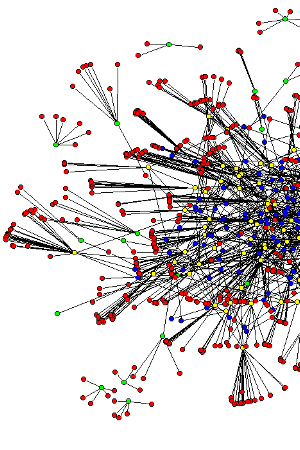A few times over the past week, I had to face the reality that Lévi-Strauss is mostly summarized as being concerned with Man rather than human beings, with deep Human Nature rather than the messiness of culture (Geertz [1967] 1973). Lévi-Strauss, it would seem, is just another Cartesian.
I must acknowledge that he has written much that justifies what used to be a called a “reading” of his work, and can now be called a “translation.” Other translations are possible.
In any event, yesterday, an interview with Noam Chomsky was published in the New York Times:
Journalist: It will soon be 60 years since your first book, “Syntactic Structures,” was published. Where was the study of linguistics then and what did you see that could be done?
Chomsky: The belief at the time was that languages can vary arbitrarily, so when you study a new language you should come to it without any preconceptions. Such views are still held, although the evidence to undermine them, I think, is simply overwhelming. Studies have shown that the diversity and complexity is superficial, while the internal system, which yields the fundamental properties of language as a system of thought, may be close to uniform among humans — basically following very simple genetically determined properties and general laws, like principles of computation. Some of the most exciting work in the field is going in that direction.
(November 5 2016 –)
A faculty colleague in linguistics who had been a student in Chomsky’s department at MIT once told me that, “of course, we do not do transformational grammar the way he did it. We now use machines to directly view the neurological activity.”
I do like Chomsky’s using the fundamental word in Saussurian linguistics, “arbitrary,” to dismiss Saussure and concerns with variation or history. Diversity is “superficial,” the “fundamental properties are … uniform … genetically determined.
Boasians (and I include Lévi-Strauss in the group I am assembling here) need not complain here if we take Chomsky to be writing about what Boas’ “psychic unity of mankind.” As far as I can tell, Boas wrote about this as an open potentiality, and did not directly investigate what it might be. Boasians are concerned with what happens next after the potentiality has been activated. Boasians may be willing to ignore what MRIs, CTC scans and other machines tell us about neurology, but they will not ignore “diversity.”
Now, there is no evidence that Lévi-Strauss, either, ever actually investigated deep structures, Man, or Human Nature. At least, he never looked for his material where it makes most sense to find it (as Chomsky and his students do). He read ethnography and, most spectacularly, took the details of ongoing diversification and its consequences more seriously perhaps than any other anthropologist. He took it so far as never stopping at the intermediary moment when diversification patterns, the moment Saussure wrote about as “langue,” and American anthropology as (a) “culture” (later transformed into words like “epochs”).
For those who have never read Lévi-Strauss, I suggest they start with a little paper on Santa Claus ([1952] 1993). The paper begins with an ethnographic anecdote (a Catholic bishop hanging and burning Santa Claus in effigy) and moves fast through a history of Christmas celebrations in France. And then the Lévi-Strauss of La pensée sauvage ([1962] 1966) and Mythologics asserts himself as he talks of “very old elements … shuffled and reshuffled” and takes the reader around the world:
Father Christmas … expresses the difference in status between little children on the one hand, and adolescents and adults on the other. … He is linked to a vast array of beliefs and practices which anthropologists have studied in many societies …. There are, in fact, few societies where, in one way or another, children (and at times also women) are not excluded from the company of men through ignorance of certain mysteries or their belief carefully—carefully fostered—in some illusion that the adults keep secret until an opportune moment …. At times these rites bear a surprising resemblance to those considered here. For example, there is a startling analogy between Father Christmas and the kachina of the Indians of the south-west United States. These costumed and masked beings are gods and ancestors become incarnate who return periodically to visit their village and dance. ([1952] 1993: 43-44)
…
when dead children come to life, and the even more clearly defined initial quest of the season, that of Hallow-Even, which was turned into All Saints’ Eve by ecclesiastical decision. Even today in Anglo-Saxon countries, children dressed up as ghosts and skeletons hassle adults unless they reward them with small presents.
What is universal is the making of difference, the production of culture, with the consequence that human worlds are necessarily tamed, domesticated but never for good among any population at any time as the tamed goes feral and requires wild thinking to tame it again, temporarily. (with thanks to Michael Scroggins for making me thing about the “feral”).
Deep syntactic structures (and other physiological matters) may be necessary to play with Santa Claus, but they cannot produce Santa Claus, in any of his actual manifestations.
 Print This Post
Print This Post


